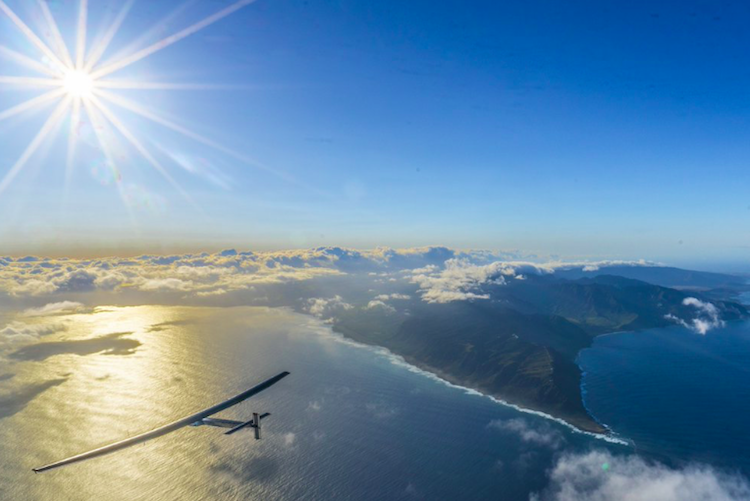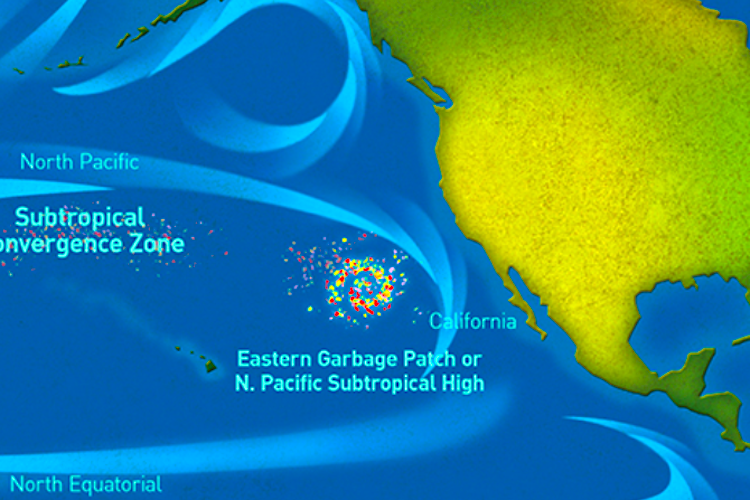Solar Impulse Pilot: ‘I Flew Over Plastic Waste As Big As a Continent’
ENVIRONMENT, 2 May 2016
Lorraine Chow, EcoWatch - TRANSCEND Media Service
As the Solar Impulse 2 made its historic 62-hour flight from Hawaii to California without fuel, pilot Bertrand Piccard personally saw the horrific amount of plastic in our oceans.
While flying above the Great Pacific Garbage Patch, Piccard sent out a tweet to Boyan Slat, the 21-year-old founder and CEO of The Ocean Cleanup.
“I flew over plastic waste as big as a continent,” Piccard wrote. “We must continue to support projects like @BoyanSlat Ocean Cleanup,” referring to Slat’s ambitious project of ridding the world’s oceans of plastic trash.
https://twitter.com/bertrandpiccard/status/723535670036299778/photo/1?ref_src=twsrc^tfw
The Ocean Cleanup describes itself as the “world’s first feasible concept to clean the oceans of plastic” and has garnered widespread public admiration and support especially for Slat, a former aerospace engineering student who proposed the concept when he was only 17.
Piccard and Slat also spoke on Friday as the solar-powered plane made its risky journey.
Having a live chat with @bertrandpiccard while he pilots @solarimpulse directly above the Great Pacific Garbage Patch – today around 9AM PT
— Boyan Slat (@BoyanSlat) April 22, 2016
It’s no surprise that the pilot and the young inventor linked up—both are using innovative technology to promote the greater good of the planet.
Piccard and the Solar Impulse team plan to fly around the world using only the power of the sun to promote clean transportation and other environmental causes.
“We have demonstrated it is feasible to fly many days, many nights, that the technology works,” fellow pilot Andre Borschberg told the Associated Press.
“I think innovation and pioneering must continue,” Piccard added. “It must continue for better quality of life, for clean technologies, for renewable energy. This is where the pioneers can really express themselves and be successful.”
BREAKING NEWS #Si2 and @bertrandpiccard just landed in #SF after 3 days of flight without fuel #futureisclean pic.twitter.com/LTRRfXkxNu
— Solar Impulse Foundation (@solarimpulse) April 24, 2016
Slat has spoken before about the necessity to protect our oceans.
“The oceans are the most important life—support systems of our planet,” he said in 2014. “It regulates the climate, it produces oxygen. The vast majority of biodiversity can be found in the ocean.”
The Ocean Cleanup involves a massive static platform and V-shapped booms that passively corrals plastics with wind and ocean currents. If all goes to plan, the project will officially launch in 2020 and be the longest floating structure ever deployed in the ocean.
Similarly, both parties have experienced hiccups along the way. Before arriving in California, the plane, the Solar Impulse 2, had been grounded in Hawaii for nine months as it underwent repairs after its record-breaking five-day trip from Japan to Hawaii in July.
As for Ocean Cleanup project, despite a 530-page feasibility study, some critics and scientists have written off Slat’s idea on mechanical design and ecological impacts. Dr. Marcus Eriksen, the co-founder of 5 Gyres, offered a number of constructive suggestions for the project.
Still, it’s very clear that the environment needs whatever help it can get, from curbing our reliance on dirty energy to putting a stop to plastic waste. The world’s oceans and marine life are suffering from a devastating plastic crisis, with 8 million metric tons of plastic waste dumped into our oceans every year. Plastic pollution is only getting worse as consumer use of plastic and plastic-intensive goods intensifies in emerging countries.
Not only that, an alarming new study by the University of Delaware physical oceanographer Tobias Kukulka reported that there might be much more plastic than what’s estimated.
“My research has shown that ocean turbulence actually mixes plastics and other pollutants down into the water column despite their buoyancy,” Kukulka said, according to UD Daily. “This means that surface measurements could be wildly off and the concentration of plastic in the marine environment may be significantly higher than we thought.”
DISCLAIMER: The statements, views and opinions expressed in pieces republished here are solely those of the authors and do not necessarily represent those of TMS. In accordance with title 17 U.S.C. section 107, this material is distributed without profit to those who have expressed a prior interest in receiving the included information for research and educational purposes. TMS has no affiliation whatsoever with the originator of this article nor is TMS endorsed or sponsored by the originator. “GO TO ORIGINAL” links are provided as a convenience to our readers and allow for verification of authenticity. However, as originating pages are often updated by their originating host sites, the versions posted may not match the versions our readers view when clicking the “GO TO ORIGINAL” links. This site contains copyrighted material the use of which has not always been specifically authorized by the copyright owner. We are making such material available in our efforts to advance understanding of environmental, political, human rights, economic, democracy, scientific, and social justice issues, etc. We believe this constitutes a ‘fair use’ of any such copyrighted material as provided for in section 107 of the US Copyright Law. In accordance with Title 17 U.S.C. Section 107, the material on this site is distributed without profit to those who have expressed a prior interest in receiving the included information for research and educational purposes. For more information go to: http://www.law.cornell.edu/uscode/17/107.shtml. If you wish to use copyrighted material from this site for purposes of your own that go beyond ‘fair use’, you must obtain permission from the copyright owner.


Let’s mount a campaign for countries to use their navies to corral this junk, bring it to shore,and recycling all that can be, while finding appropriate disposal for what cannot.